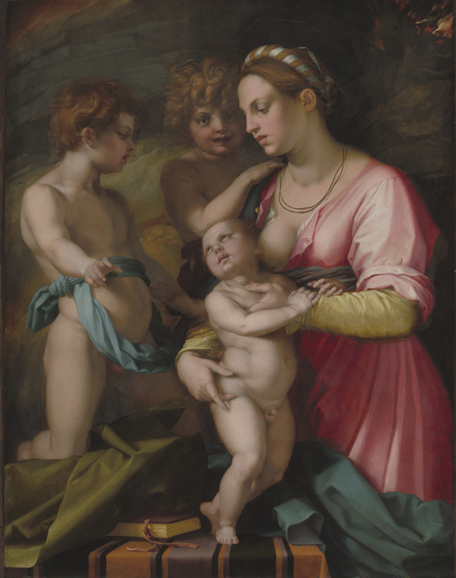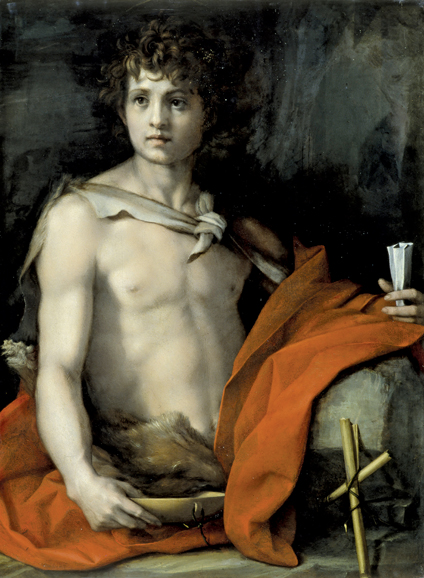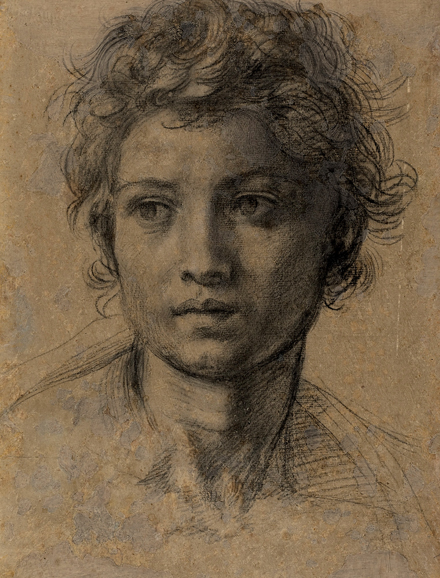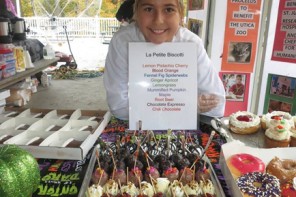He was one of the finest artists you’ve probably never heard of.
Or maybe you know the work but not his name.
Or you remember his name from your school days as the title of a 19th-century poem by Robert Browning that has become synonymous with the gallantry of second-tier strivers. Surely, you know its most famous lines: “Ah, but a man’s reach should exceed his grasp, or what’s a heaven for?”
Yet in the Renaissance, Andrea del Sarto (1486-1530) was a titan whose name was uttered in the same breath as that singular and singularly named trinity — Leonardo, Michelangelo, Raphael.
“He was the most important and the most satisfying artist working continuously in Florence in the first decade of the 16th century,” says Andrea Bayer, the Jayne Wrightsman curator in the Department of European Paintings at The Metropolitan Museum of Art in Manhattan.
Now the artist is having another moment. “Andrea del Sarto: The Renaissance Workshop in Action,” at The Frick Collection in Manhattan through Jan. 10, features 45 drawings and three paintings in the first major American monographic exhibit on his art. Associate curator Aimee Ng — who coordinated the show, which originated at the J. Paul Getty Museum in Los Angeles — calls it “the overdue expression … of an interest in the artist that has long been part of art historical discourse.”
It is accompanied by a small exhibit at The Met that juxtaposes two Andrea works — the museum’s “The Holy Family With the Young Saint John the Baptist” (circa 1528, oil on wood) and “Charity” (1528-29, oil on wood), on loan from the National Gallery of Art in Washington, D.C.
That Andrea — del Sarto was not his last name but a description of his father’s profession as a tailor, or sarto — isn’t better known in our culture probably says as much about fame, history, fate and our times as it does about the artist himself. Certainly, it’s not for want in the work.
“His drawing, use of color, sense of composition, feel for his subjects, choreography and harmony of figures — it all comes together,” says Bayer, a Pelham resident who co-curated The Met show with Michael Gallagher, the museum’s Sherman Fairchild conservator in charge, Department of Paintings Conservation.
The drawings — in which, Ng says, “his creative process is laid bare” and which make up the majority of works on display — are sublime examples of shadowing, shaping, sculpting, if you will, on paper that reveal the artist at the height of his experimental powers with red chalk. Andrea used hatching (closely spaced parallel lines), wet tips and brushes, stumping (rubbing with an instrument), a combination of red and black chalk — and even his own hands, Bayer says — to create such works as the exquisite “Study for the Head of Julius Caesar” (circa 1520). A preparatory sketch for Andrea’s monumental fresco “Tribute to Caesar” at the Villa Medici in Poggio a Caiano, the work offers us a chiseled profile of the doomed Roman consul that would not be out of place among contemporary men — his gaze at once fierce and introspective, a quality that permeates Andrea’s subjects.
It is not the typical, middle-aged, world-weary Caesar, but then, neither is Andrea’s painting of “Saint John the Baptist” (circa 1523, oil on panel), perhaps his greatest, most famous work, the prototypical “voice crying out in the wilderness,” wearing camel’s hair and living on locusts and wild honey. Instead, he is portrayed as a tender youth, his nude, molded chest thrown into sharp relief by the scarlet cloak about him. John’s beauty makes his inevitable martyrdom that much more poignant and reflects the Renaissance love of the classical sculpture that was being unearthed during this period.
“Renaissance culture celebrated the human and thus the beauty of the human body in perfect harmony with Christian faith,” Ng says, “and a belief that humans were made in God’s image.”
The perfection of his “Saint John the Baptist” may explain why Andrea was eclipsed by more idiosyncratic contemporaries. So, too, does his insularity. Andrea’s world was one of family and Florence. His wife, Lucrezia, was his contemplative muse. Not for him the big career crisscrossing Italy.
It was to the republic of Florence that he was loyal, and it was to its ideal that he created “The Holy Family With the Young Saint John the Baptist” for the Florentine official Giovanni Borgherini and “Charity” for Francis I in the hope that the French king would come to the besieged republic’s aid against the Medici-allied Holy Roman Emperor Charles V. To no avail. Charles’ troops swept in, bringing the plague and with it death to Andrea.
He comes back to us at a moment when our culture has a renewed interest in the Renaissance, albeit through woefully anachronistic TV series like “The Tudors,” “The Borgias” and “Reign.”
“The questions pursued and the avenues investigated by scholars tell us about our own culture,” Ng says. “This is why, in a way, there can never be ‘nothing left to say’ about an artist or period. Each new moment of scholarship brings a set of new perspectives and context to the object of study.”
For more, visit frick.org and metmuseum.org.







